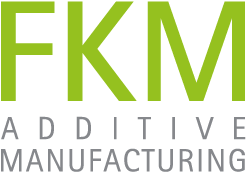
Metals for industrial 3D printing
3D printing aluminum
AlSi10Mg
3D printing aluminum: heavy-duty lightweight
Which 3D printing aluminum is optimal?
After extensive testing of various alloys, we decided to produce with 3D printed aluminum AlSi10Mg. AlSi10Mg is tried and tested in additive manufacturing and is one of the most common and versatile 3D printing aluminum materials currently available.
These material properties of AlSi10Mg convince
3D printing aluminum AlSi10Mg consists of 89.5% aluminum, 10% silicon and 0.5% magnesium. The combination of silicon and magnesium gives the aluminum alloy its particular strength and hardness compared to other aluminum materials used in additive manufacturing. This makes AlSi10Mg ideal for components that are exposed to high mechanical or dynamic loads.
Advantages of 3D printing aluminum AlSi10Mg
- High dynamic load capacity
- High strength
- Very good hardness
- Low weight
- High thermal conductivity
- High corrosion resistance
- Airtight and watertight

Fields of application:
3D printing aluminum AlSi10Mg is ideal for lightweight applications and components with thin-walled and complex geometries that are exposed to high stresses. This makes 3D printed aluminum ideal for mechanical components in the aerospace, automotive and bicycle industries, among others. 3D-printed components made from AlSi10Mg replace existing cast parts easily and equally well. 3D printing aluminum with AlSi10Mg enables the production of series components both in large series and in smaller batches as well as the rapid production of technical prototypes (rapid prototyping)
Extra strong and hard 3D printed aluminum alloy
The combination of aluminum with 10% silicon and 0.5% magnesium gives the alloy a particular strength and hardness compared to other aluminum alloys. In order to further increase mechanical properties such as ductility and electrical and thermal conductivity, parts made from AlSi10Mg can also be heat-treated.
The print layers in the 3D printing process are between 0.03 and 0.1 millimetres thick for this aluminum material. To ensure optimum break resistance and stability, the walls of the components should be at least 0.5 millimetres thick.

Properties 3D printing aluminum AlSi10Mg
Would you like a personal offer or advice?

Your contact team
Telephone
+49 (0) 6461 75852-50e-mail
metall@fkm.net
